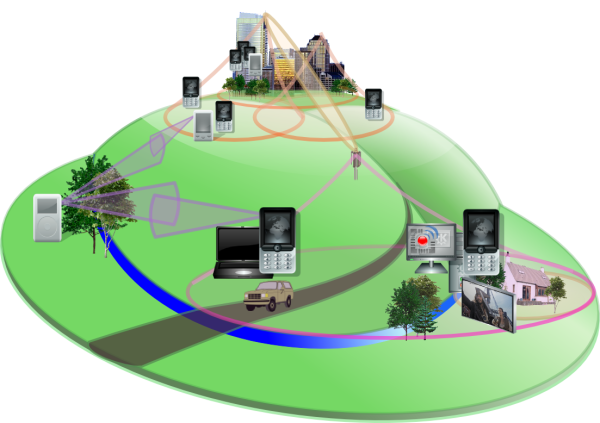Mobile speech and data communications have become part of everyday life in all parts of the world. However, the provision of more sophisticated ‘tele-presence’ services requires a further quantum leap in research if we are to move forward from mobile phone technology. The Communications Group plays a key role in researching and advancing the necessary enabling technologies to facilitate this quantum leap, including the physical network and service layers, as well as their joint optimisation.
Long-term research in the group focuses on communications and information theory. It provides ideas for more short-term, applied research, while directly appealing to industrial partners across the globe.
Having completed a range of studies related to the current operational wireless systems and their components, the group’s research activities have now progressed to the next generation of wireless communications systems and their components. The Communications Group is also involved in the European Networks of Excellence Newcom (https://newcom.ismb.it) and the Virtual Centre of Excellence (VCE) in mobile communications at www.mobilevce.com
- The Myth
Sixty years of research following Shannon's pioneering paper has led to telecommunications solutions operating arbitrarily close to the channel capacity - "flawless tele-presence" with zero error is available to anyone, anywhere, anytime across the globe...
- The Reality .
Once we leave home or the office, even top of the range smart phones and tablet-computers fail to maintain 'flawless tele-presence' quality. They also miserably fail to approach the theoretical performance predictions, typically operating at half the theoretical throughput.
The 1000-fold throughput increase of the best third-generation (3G) phones over second-generation (2G) GSM phones and the 1000-fold increased tele-traffic predictions of the next decade require substantial further bandwidth expansion towards ever increasing carrier frequencies, expanding beyond the RF band to OW frequencies, where substantial bandwidths are available.
- The Future
At the time of writing Optical Wireless (OW) communications is less well developed than RF wireless. However, the pathloss of electromagnetic (EM) waves increases with their frequency and light propagates only in Line-Of-Sight (LOS). Hence we are developing powerful new LED-transmitter Down-Link (DL) preprocessing techniques and Portable OW (POW) as well as unlicensed RF receiver cooperation in the 10 - 300~GHz band for tackling the above-mentioned challenges and for resolving the conflicting design constraints imposed on the flawless tele-presence systems of the future. The evolution from the operational RF GSM, LTE, Wimax systems towards the resultant heterogeneous OW/RF cooperation-aided {\em ad hoc} network concept is portrayed in the adjacent figure, which facilitates the reduction of the escalating power-consumption and energy-costs of wireless communications.
- The Challenges
At the time of writing there are substantial challenges in diverse areas, inclueding, but not limited to the following topics: stereoscopic video, holographic video, joint source and channel coding, for video and audio, radically new channel codes, such as protographic LDPC codes, unity-rate codes, variable-length error correction codes, avant garde multicarrier transceivers using time-, frequency- and spatial-domain spreading, multi-functional antenna arrays, cutting-edge multiple access and duplexing schemes, ad hoc and mesh networking,

